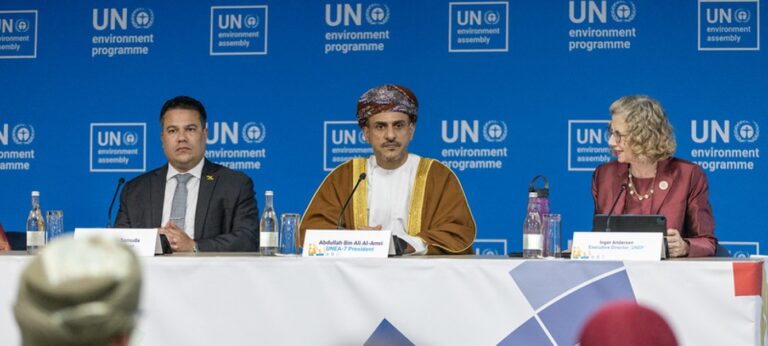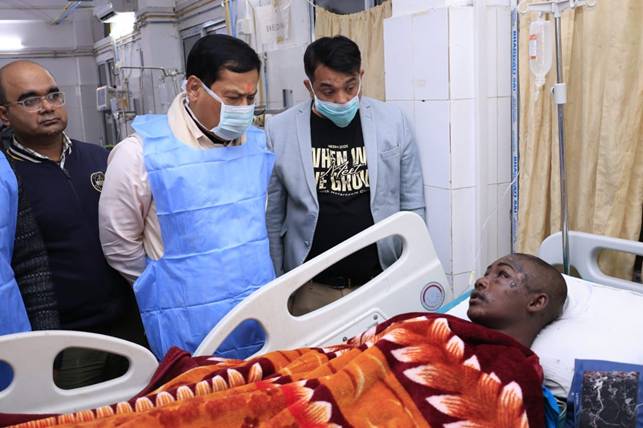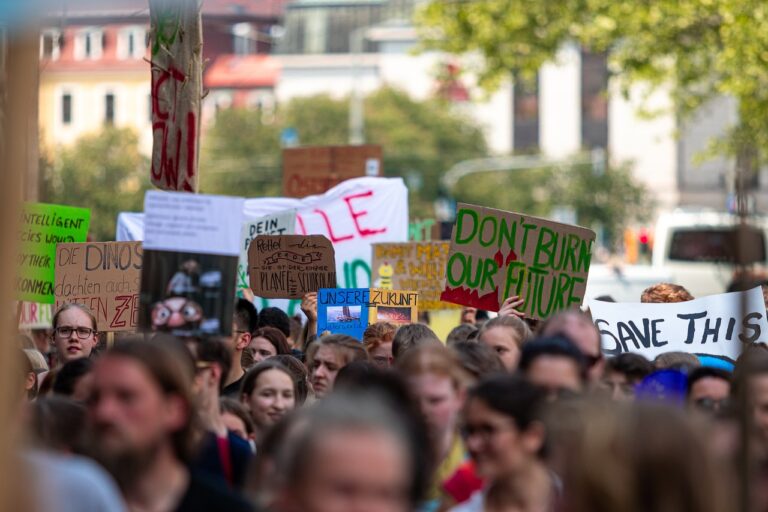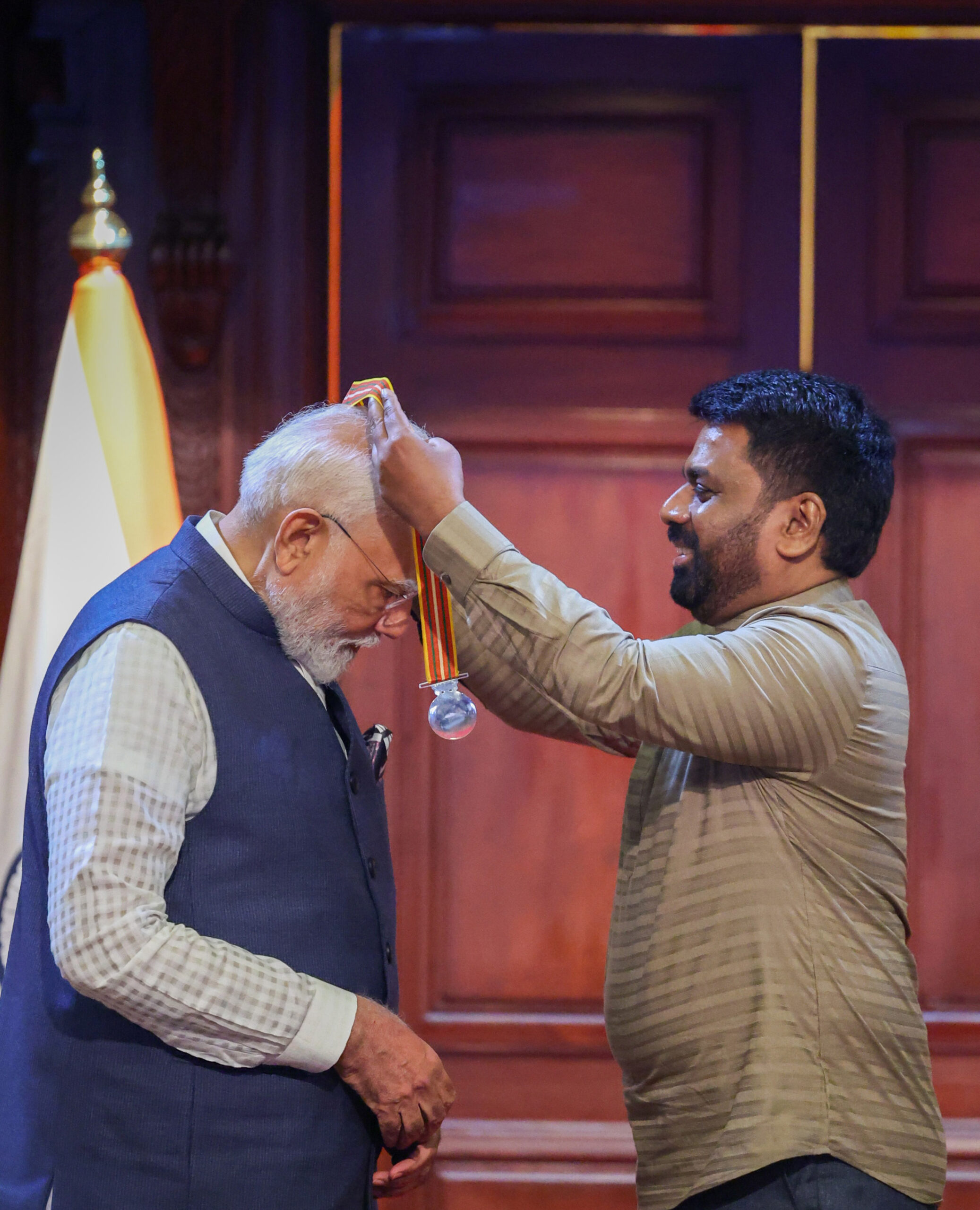
Prime Minister Narendra Modi being conferred with Sri Lanka's prestigious Mithra Vibhushana medal by the Sri Lankan, Anura Kumara Disanayaka, in Colombo, on April 05, 2025.
Prime Minister Narendra Modi’s visit to Colombo, where he was today conferred the Sri Lanka Mitra Vibhushana – the highest honour bestowed on foreign leaders – and oversaw the signing of seven MoUs, marks a pivotal moment in India’s campaign to reassert its sway over Sri Lanka.
Amidst China’s deep-rooted Belt and Road Initiative (BRI) presence, India’s latest moves—debt restructuring (USD 100 million in loans turned to grants), energy projects (Sampur Solar Power Project, Trincomalee energy hub), defence pacts (Colombo Security Conclave framework), and infrastructure upgrades (Maho-Omanthai railway)—aim to pull Sri Lanka back from Beijing’s orbit.
India’s made headway. The 2025 deals and Anura Kumara Dissanayake’s India-friendly stance – his first overseas trip as President was to India in December 2024 – ride the wave of 2022’s anti-China protests and Nandasena Gotabaya Rajapaksa’s fall in July 2022.
Immediate Outcomes of Modi’s Visit
Modi’s visit delivered results with a punch. The debt relief and LKR 2.4 billion for the Eastern Province offer Sri Lanka a lifeline, starkly different from China’s tighter-fisted restructuring.
Defence agreements, including maritime surveillance and Colombo’s pledge not to threaten India, take aim at China’s Hambantota leverage. Sri Lanka is navigating the complexities of its ties with both China and India, especially in crucial sectors like energy. Energy and digital strides—grid interconnectivity and the Sri Lanka Unique Digital Identity Project—tie Colombo closer to New Delhi’s orbit. Cultural efforts, like temple restorations and 10,000 homes for Indian-origin Tamils, stir historical goodwill, while fisherman release talks chip away at a nagging sore.
Sri Lanka’s China Tilt and India’s Push (2000–2025)
Colombo’s lean towards Beijing took off under Mahinda Rajapaksa (2005–2015), who tapped USD 7 billion in BRI loans for Hambantota Port and Colombo Port City. The 2017 99-year Hambantota lease to China Merchants Port Holdings, after a USD 1.4 billion default, locked in Beijing’s stake, holding 10% of Sri Lanka’s external debt by 2022.
India fought back with the 2000 India-Sri Lanka Free Trade Agreement (ISFTA), lifting trade to USD 5.54 billion by 2023-24, and post-2009 Tamil region aid. The 2022 crisis—USD 51 billion default, forex at USD 50 million—saw India’s USD 4 billion aid eclipse China’s response. Anura Kumara Dissanayake’s September 2024 win, December 2024 India trip, and January 2025 China visit (15 BRI deals) show Sri Lanka’s tightrope walk.
China’s Entrenched Investments in Sri Lanka
China’s footprint in Sri Lanka runs deep and wide. Hambantota Port, operational since 2010 and leased in 2017, moves over 4 million tonnes of cargo yearly, with China Merchants sinking USD 600 million by 2023 to scale it up. In January 2025, Sri Lanka and China’s state-run energy firm Sinopec agreed to fast-track the construction of a refinery in the southern port city of Hambantota. As of today, there have been significant developments regarding China’s offer to set up a $3.7 billion oil refinery in Sri Lanka. This project aims to enhance the operations of the Hambantota Port, built by China, by offering bunkering services, which could turn the port into a regional hub and boost local economic activity. This initiative is part of a broader set of fifteen cooperation agreements signed during President Dissanayake’s visit to Beijing in January 2025, highlighting the growing partnership between Sri Lanka and China in economic and technological fields.
Colombo Port City, kicked off in 2014 with USD 1.4 billion from China Harbour Engineering Company, covers 269 hectares and targets USD 15 billion in investments by 2030, boasting tax breaks and SEZ status since 2021. The Mattala Rajapaksa International Airport, built with a USD 209 million Chinese loan in 2013, sits underused but looms as a long-term asset. Backed by USD 7 billion in loans, China’s trade (over USD 5 billion in 2023) and January 2025 deals—digital upgrades with Huawei, tea export boosts—keep its grip firm.
The rise of Chinese involvement in Sri Lanka, particularly in critical projects like the Hambantota Port and the refinery, has alarmed India, which regards Sri Lanka as part of its strategic domain. India has traditionally been a primary energy supplier to Sri Lanka and was also negotiating a potential fuel pipeline.
India’s Investments in Sri Lanka: A Comparison
India’s investments, while substantial, differ in scale and style. Since 2009, India has poured over USD 3.5 billion into Sri Lanka’s post-war rebuild, including USD 1.9 billion for Northern Province railways and housing by 2023. The 2022 USD 4 billion aid package—lines of credit, fuel, and food—doubled China’s USD 1.4 billion Hambantota stake in immediate impact.
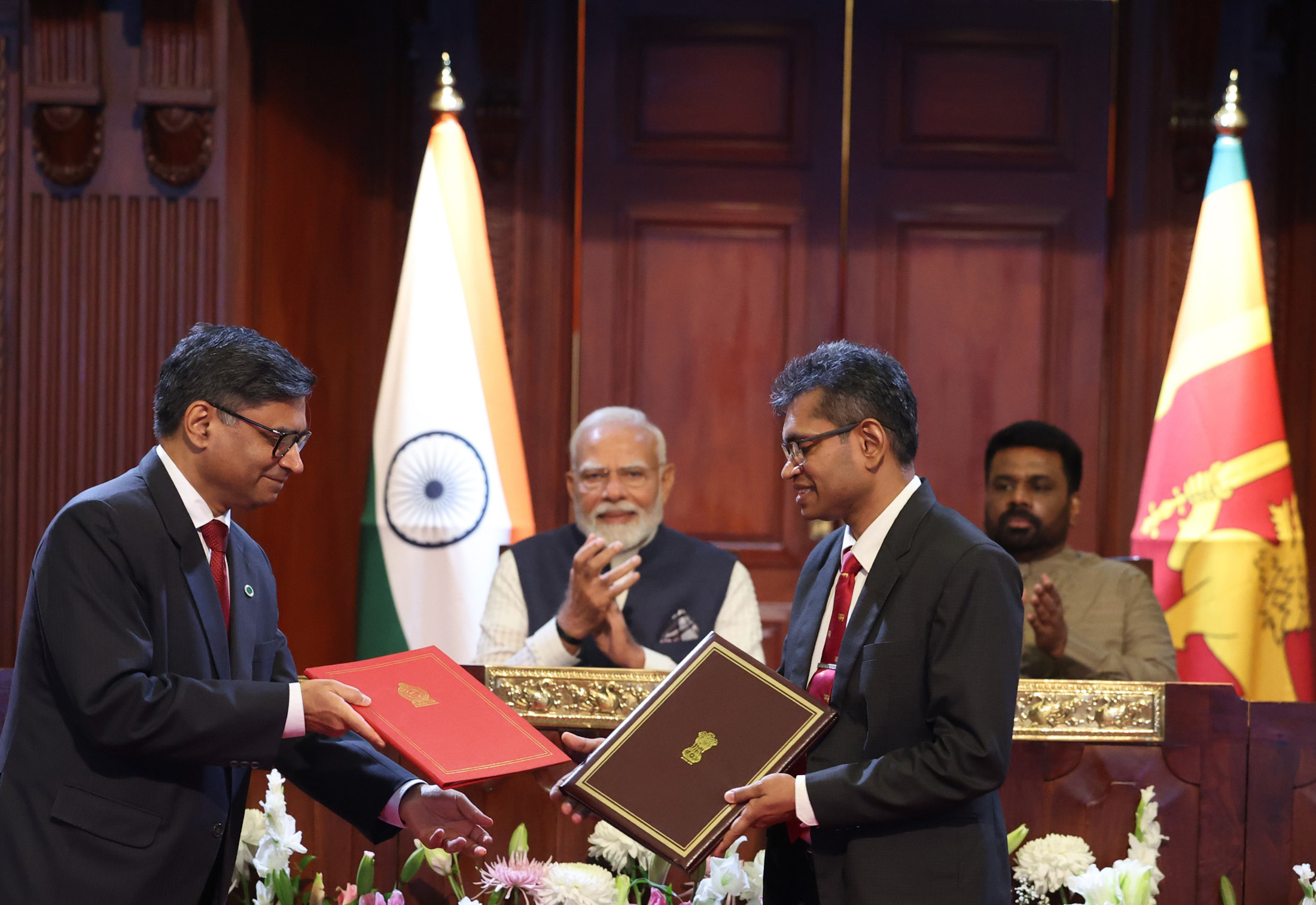
New Delhi has traditionally been among Colomboʼs largest trade partners, and Sri Lanka remains among the largest trade partners of India in the SAARC. According to the Department of Commerce (DoC), the Merchandise trade between India and Sri Lanka reached USD 5.5 billion in FY 2023-24, with Indiaʼs exports amounting to USD 4.1 billion, while Sri Lankaʼs exports reached USD 1.4 billion. Bilateral trade was also supported by various Lines of Credit and a Credit facility for the procurement of essential items.
By 2025, India’s USD 100 million debt-to-grant shift and projects like Sampur (USD 112 million) and Kankesanthurai Port upgrades (USD 61 million) will total over USD 500 million in fresh commitments. Unlike China’s mega-ports and loans at 3.3% interest, India’s focus—smaller-scale, grant-heavy, and Tamil-centric—prioritises relief and influence over ownership, though it lacks the transformative heft of Colombo Port City’s USD 15 billion vision.
Does India’s Aid Win Sri Lankan Hearts?
This time India’s aid, lighter than China’s high-interest loans, wins hearts. Since 2000, New Delhi’s bond with Colombo has ebbed and flowed. The February 2002 ceasefire between Sri Lanka and the rebel Liberation Tigers of Tamil Eelam (LTTE) saw India back peace talks, but China’s rise post-2009 dimmed its shine. Modi’s 2015 and 2019 visits pushed connectivity (2022 Trincomalee oil tank deal), while 2021 saw 300 Indian fishermen detained. India’s 2022 aid and 2023 Vision Document with Ranil Wickremesinghe paved the way for 2025’s strategic tilt.
But China’s big-ticket projects—Hambantota, Colombo Port City—anchor its clout, and Dissanayake’s Beijing trip on the invitation of Chinese President Xi Jinping mirrors 2015’s pause-and-resume dance with China under Maithripala Yapa Sirisena, who was the Sri Lankan President from January 9, 2015, to November 18, 2019.
It may be said that India’s success is real but ragged. Modi’s visit and past aid—2022’s USD 4 billion, 2025’s MoUs—claw Sri Lanka back from China’s BRI grip, scoring strategic wins. Yet, China’s entrenched investments and Sri Lanka’s 25-year balancing act cap India’s gains. Delivery and deft diplomacy will decide if India can outpace Beijing’s staying power.



